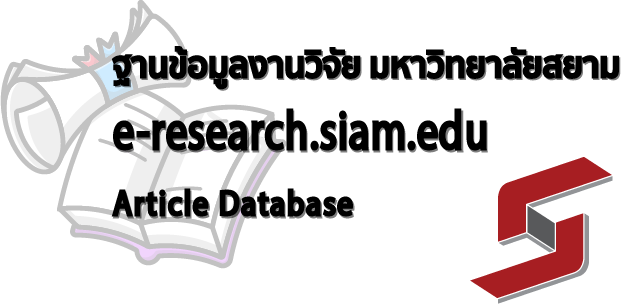- KB Home
- หลักสูตรระดับบัณฑิตศึกษา|Graduate Schools
- หลักสูตรปริญญาเอก|Doctoral Degree
- Ph.DP.IT
- Pattern discovery, visualization and interaction data analytics in a process-aware multi-tabletop collaborative learning environment
| Project Title: | Pattern discovery, visualization and interaction data analytics in a process-aware multi-tabletop collaborative learning environment |
| Author: | Mr. Parham Porouhan |
| Advisor: | Associate Professor Wichian Premchaiswadi, Ph.D., Professor James G. Williams, Ph.D. |
| Degree: | Doctor of Philosophy (Information Technology) |
| Major: | Information Technology in Business |
| Faculty: | Graduate Schools |
| Academic year: | 2017 |
Citation
Porouhan, Parham. (2017). Pattern discovery, visualization and interaction data analytics in a process-aware multi-tabletop collaborative learning environment. (Doctoral dissertation). Bangkok: Siam University.
Abstract
This dissertation builds on the intersection of educational process mining and the automatic analysis of student’s collaborative interaction data previously collected from a networked multitabletop learning environment. The main focus of the study was to analyze and interpret the data using several process mining techniques in order to increase the instructor’s awareness about the students’ collaboration process with respect to specific quantitative indicators as follows: participation (consisting of participation density, participation rate and participation dynamics metrics), interaction (consisting of interaction density and interaction dynamics metrics), time performance (including the number of time intervals between the activities as well as the duration of idle/inactive periods), similarity of tasks (symmetry of actions) and division of labor (symmetry of roles).
The empirical findings showed that high performance groups exhibited increased tendencies to perform tasks simultaneously (together) or alternatively (between group peers). Moreover, high performance groups also showed increased tendencies to interact with objects created by their other fellow group members. Although both groups showed long waiting times at the beginning of a task, high performance groups were mostly brainstorming while low performance groups were playing an idle role. High performance groups showed increased tendencies to work on the same range of actions ‘together’. Quite the opposite, low performance groups showed increased tendencies to work on a dissimilar range of actions ‘individually’
Pattern discovery, visualization and interaction data analytics in a process-aware multi-tabletop collaborative learning environment
Doctor of Philosophy in Information Technology, Siam University, Bangkok, Thailand


